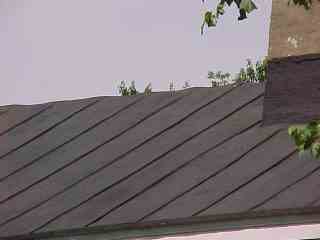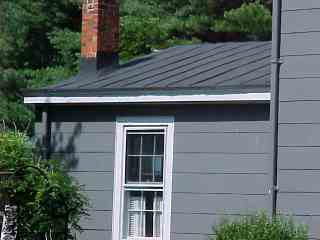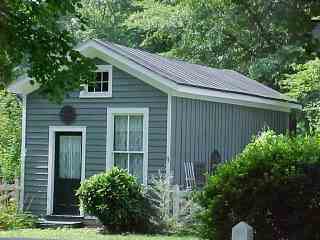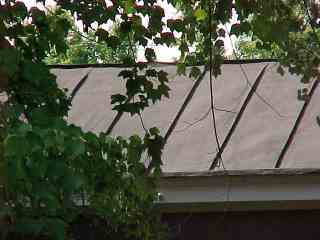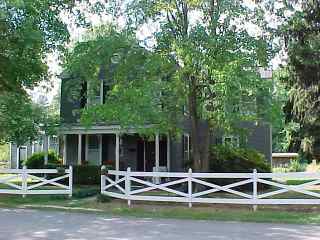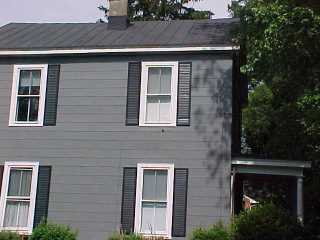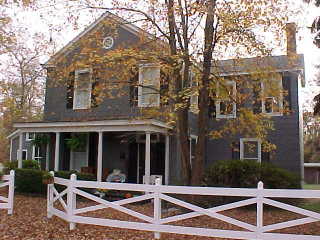 Tin roof color–an important decision for the owner of her Virginia homestead. She was unhappy with the bland look of the residence. She set out to create a dramatic, visual impact, yet remain true to the historic atmosphere of Ashland. This is her story.
Tin roof color–an important decision for the owner of her Virginia homestead. She was unhappy with the bland look of the residence. She set out to create a dramatic, visual impact, yet remain true to the historic atmosphere of Ashland. This is her story.
The homestead had the advantage of a location on a quiet side street, several blocks from the railroad track. The lot was quite large with several beautiful trees surrounding the property. A white painted fence circled the area. Basically, the residence was in good shape, but not particularly attractive.
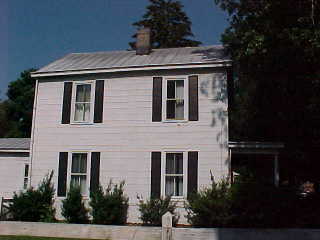 Indeed, the homestead lacked something. The white fence disappeared into the bland, dull siding. The black shutters were its best feature. The roof was covered with aging aluminum coatings. Due to the numerous old coatings and the roof leaks, the owner quickly elected to proceed with the fully reinforced approach.
Indeed, the homestead lacked something. The white fence disappeared into the bland, dull siding. The black shutters were its best feature. The roof was covered with aging aluminum coatings. Due to the numerous old coatings and the roof leaks, the owner quickly elected to proceed with the fully reinforced approach.
This decision allowed the owner two advantages:
1. For a partial payment, we applied the base work of the fully reinforced system, thereby eliminating the leaks.
2. With the roof leaks resolved, the owner could take her time to decide on her color scheme.
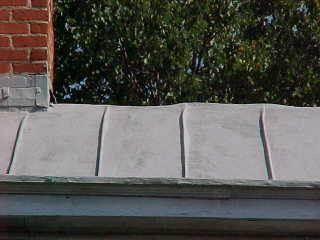 Meanwhile, the crew weatherproofed the roofs of the main structure, the side cottage and the garden shed. This first step stopped the leaks. The crew pressure washed all metal panels removing any loose debris. Then they applied primer over the metal roof to retard rust. This step was particularly important for the adjoining cottage.
Meanwhile, the crew weatherproofed the roofs of the main structure, the side cottage and the garden shed. This first step stopped the leaks. The crew pressure washed all metal panels removing any loose debris. Then they applied primer over the metal roof to retard rust. This step was particularly important for the adjoining cottage.
Next, the fellows applied the base work of the fully reinforced restoration system. For this step, a light gray acrylic sufficed since the two top coats would hide any traces of the acrylic color. In this project, the selection of the acrylic tint for the base layer was unimportant.
After four or five months, the owner selected BLACK for the roof. I confess I was startled by her choice, but she kindly provided the address of the residence that inspired her.
At that point, the manufacturer prepared a large demo card of the black tint in the exact acrylic formulation. After the owner selected the variation she liked, the manufacturer prepared a special run of black acrylic.
To complete the project, the crew made two more trips to her homestead to apply the top coatings of black acrylic. They had to work with the painter of the siding to coordinate schedules.
At first glance, that precaution may appear extreme, except there is a characteristic about acrylic that can be annoying. Fresh acrylic acts like a magnet for old, loose paint chips. Not even careful washing will eliminate these chips. It is easier for everyone to insure that the crew applied the final roof coat on any surfaces located below the painter’s work areas.
Tin roof color selected: excellent choice
1. Her color scheme adds drama to the property
2. Imposing trees now frame the home, not hide it.
3. The white fence further accents the homestead, instead of disappearing into the old white siding.
4.The original black shutters highlight the windows more attractively than before. The owner spotlighted a charming idiosyncrasy back doorway
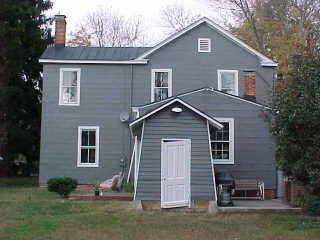
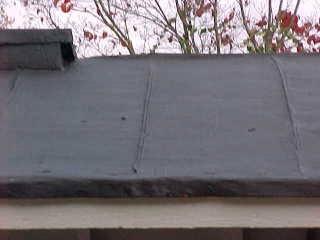
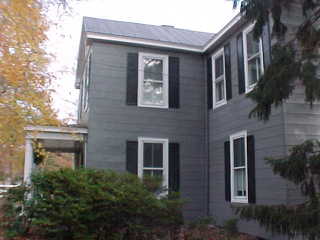
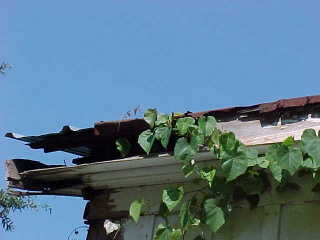
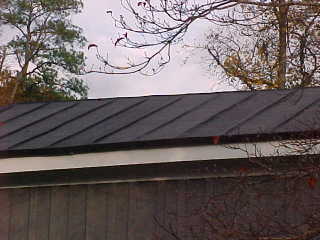
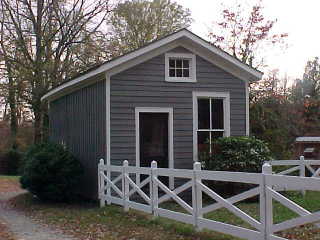
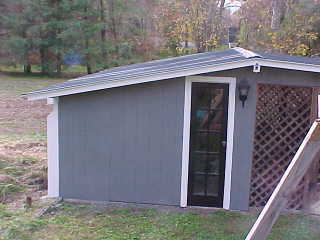
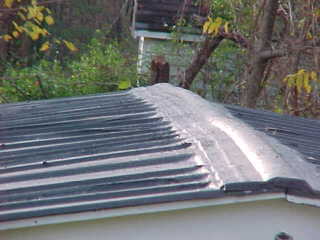
Five Years Later
Update: Approximately five years later, well after the hurricane’s tragic visit, I drove by and snapped the six photos at the bottom of the page. Her property had escaped the falling trees that destroyed many nearby structures. The drama of her color selection (plus, to be fair, the trees, fence and general property features) dominates the street
The six photos below were taken in late 2007. The roofing panels are an excellent example of the appearance of the fully reinforced application of acrylic and mesh to an older roof.
